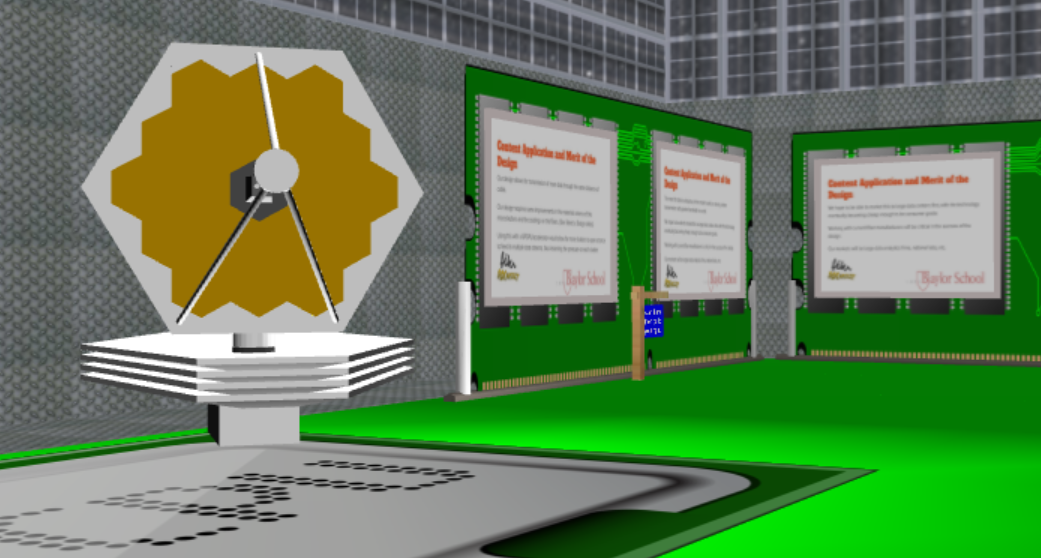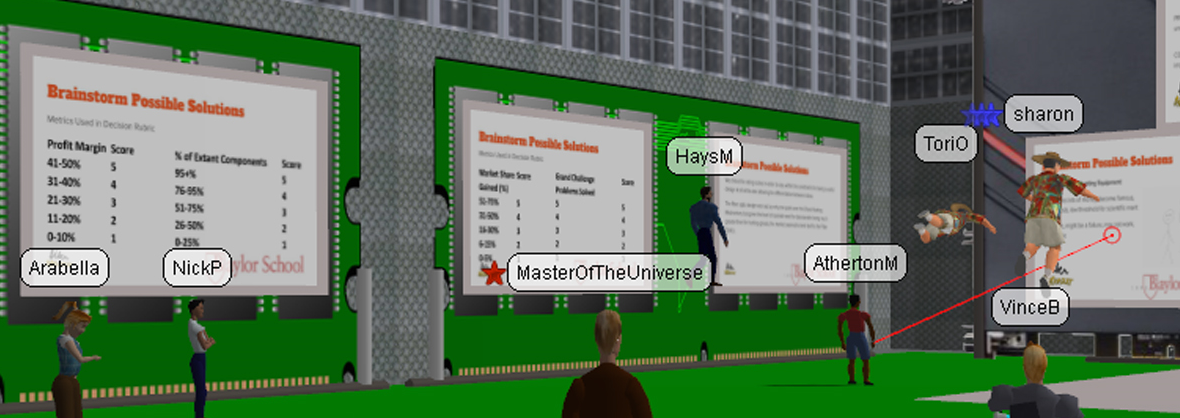NASA’s Goddard Space Flight Center in Greenbelt, Maryland, announced the winners of the 2017 OPTIMUS PRIME Spinoff Promotion and Research Challenge (OPSPARC) on May 5, 2017. With over 800 entries from across the nation between grades 3 and 12, NASA and the public selected winners for three age groups: elementary, middle and high school.
The winners of the 2017 OPSPARC contest met the call to “Be the Spark” behind innovative concepts for new uses of NASA technologies, sharing their spinoff ideas in digital poster boards, called glogs, within a cloud-based, interactive learning and multimedia platform made by Glogster.
High school students, with the assistance of college student mentors, were asked to take the challenge a step further by developing their spinoff proposals in a three-dimensional (3-D), multi-user, virtual-worldthat uses virtual graphics and 3-D models to create engineering and business analyses of the spinoff concepts.
Team Fiber Rockedit, the high school 2017 InWorld OPSPARC winners from the Baylor School in Chattanooga, Tennessee, focused on using NASA’s the James Webb Space Telescope Microshutter Array for fiber optic communications. Erik Fong, Atherton Mook, Hays Mook and Nick Perlaky, who are all sophomores from the Baylor School, were assisted by their college engineering mentor, Kelly DeRees, a sophomore studying materials science and engineering at Ohio State. Together they turned their vision into a virtual reality within the NIAUniverse, the virtual world universe developed and run by the National Institute of Aerospace (NIA). Erik, Atherton, Hays and Nick did their work for this contest as part of an after-school Science, Technology, Engineering, Arts and Mathematics (STEAM) Team that is sponsored by Dr. Vince Betro.
Kelly DeRees is no stranger to OPSPARC or NASA. In 2015, Kelly and her teammate David Sugg won the InWorld OPSPARC challenge. The two paired again last year to be mentors and assisted the finalists for the 2016 InWorld OPSPARC challenge. During the summer of 2016, Kelly was an intern at NASA Goddard with the Satellite Servicing Projects Division supporting the Restore-L mission. This summer Kelly is an intern at ASRC Federal in Huntstville, Alabama, supporting research into 3-D printing parts for rocket engines out of high temperature metal alloys. Kelly attributes her work within the NASA OPSPARC project to propelling her mentorship opportunities.
Team Fiber Rockedit, along with elementary age-group winners, Sienna Paggao, Carolyn Chambers, Olivia Turnage and Mila Ahsaei, and middle school age-group winners, Alexa Tabibian and Ellie Jones, will visit Goddard for a workshop and awards ceremony held in their honor June 21 and 22. As part of the workshop, the winners will create their own public service announcement video with guidance from NASA video producers and actor Peter Cullen, the voice of the TRANSFORMERS character OPTIMUS PRIME. They will also go on a behind-the-scenes tour of Goddard and meet some of the top scientists and engineers at NASA.
TRANSFORMERS and OPTIMUS PRIME are trademarks of Hasbro and are used with permission.
For more information about this year’s OPSPARC challenge, visit: https://www.nasa.gov/feature/goddard/2017/nasa-s-transformers-optimus-prime-spinoff-promotion-and-research-challenge-2017-has-found
To see the winning glogs, visit:
To see a video of the high school team’s virtual Team World visit: https://www.youtube.com/watch?v=gsj2uAvTGCg&list=PLOyTYArLIxcbLq6qXGoHJqDZCEraxkqwZ&index=1&t=417s
For information about NASA’s James Webb Space Telescope, visit: www.nasa.gov/webb or jwst.nasa.gov






























